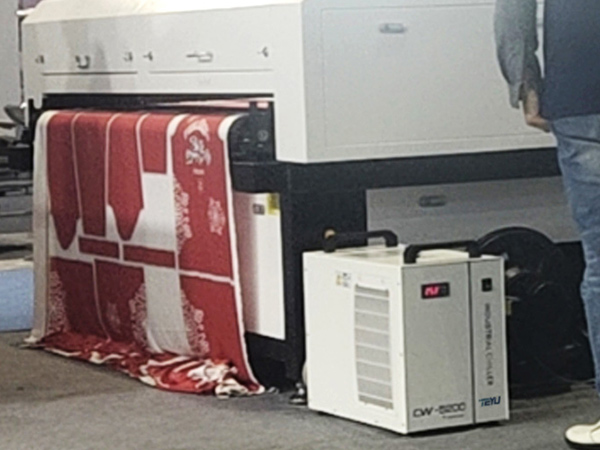Advantages of Textile Laser Printers:
1. High precision: Textile laser printers can create precise and detailed designs.
2. Versatility: Textile laser printers can be used to print on various fabrics.
3. Durability: Laser-printed designs are durable and fade-resistant.
4. Efficiency: Laser printers can print quickly and efficiently.
Factors to Consider When Choosing a Textile Laser Printer:
1. Laser source: CO2 lasers are the most common type of laser used in textile and fabric laser printers. They offer a good balance of power, precision, and efficiency.
2. Print resolution: The print resolution of a laser printer determines how detailed the printed designs will be. A higher print resolution will result in more detailed designs.
3. Print speed: The print speed of a laser printer determines how quickly it can print designs. A faster print speed will be important if you need to print a high volume of designs.
4. Software: The software that comes with a laser printer will allow you to create and edit designs. Make sure the software is compatible with your computer and has the features you need.
5. Water chiller: By choosing a water chiller that matches your laser's requirements, you can ensure optimal performance and longevity for your textile laser printing machine.
How to Choose a Water Chiller for Textile Laser Printer:
To equip your CO2 laser textile printer with a suitable water chiller, the cooling capacity required and key considerations that you should consider:
1. Cooling Capacity: Ensure the water chiller has a cooling capacity slightly above the calculated requirement to maintain stable operation and handle any unexpected heat loads.
2. Flow Rate: Check the laser manufacturer's specifications for the required coolant flow rate, typically measured in liters per minute (L/min). Ensure the water chiller can provide this flow rate.
3. Temperature Stability: The water chiller should maintain a stable temperature, usually within ±0.1°C to ±0.5°C, to ensure consistent laser performance.
4. Ambient Temperature: Consider the operating environment's temperature. If the ambient temperature is high, choose a water chiller with a higher cooling capacity.
5. Coolant Type: Ensure the water chiller is compatible with the recommended coolant type for your CO2 laser.
6. Installation Space: Ensure there is enough space for the water chiller installation and proper ventilation to dissipate heat.
7. Maintenance and Support: Consider the ease of maintenance, availability of spare parts, and water chiller manufacturer support.
8. Energy Efficiency: Opt for energy-efficient models to reduce operating costs.
9. Noise Level: Consider the noise level of the water chiller, especially if it will be used in a quiet working environment.

Source: https://www.teyuchiller.com/how-to-choose-textile-laser-printer-water-chillers